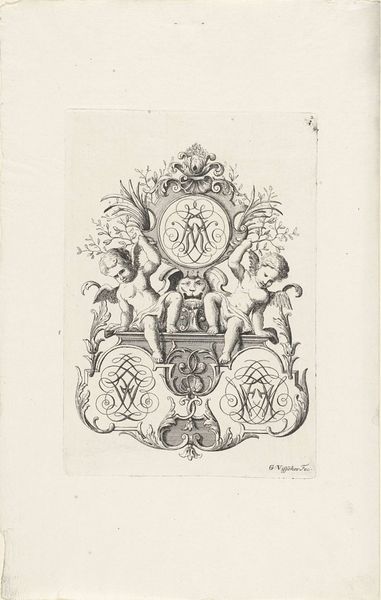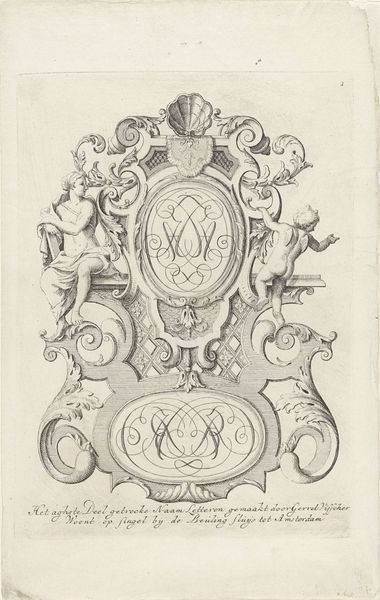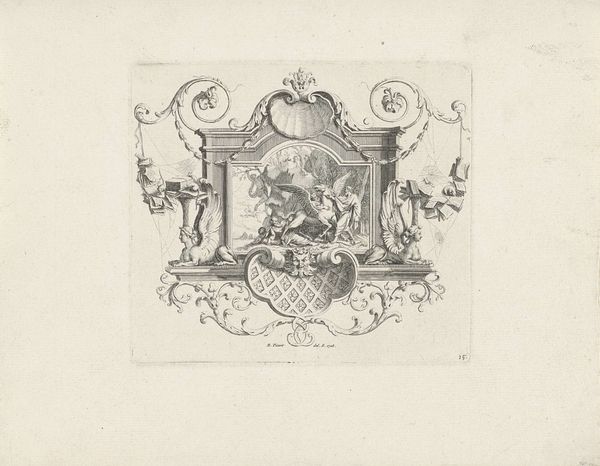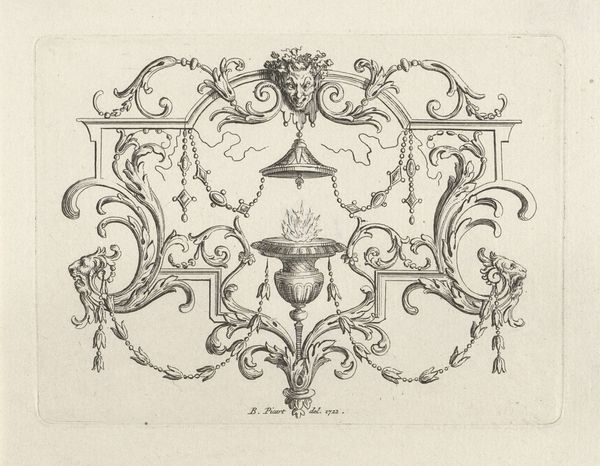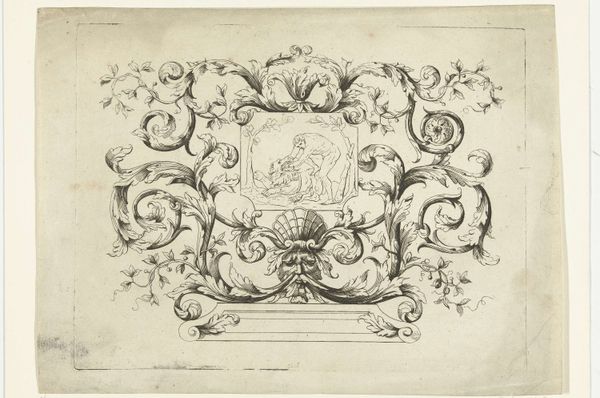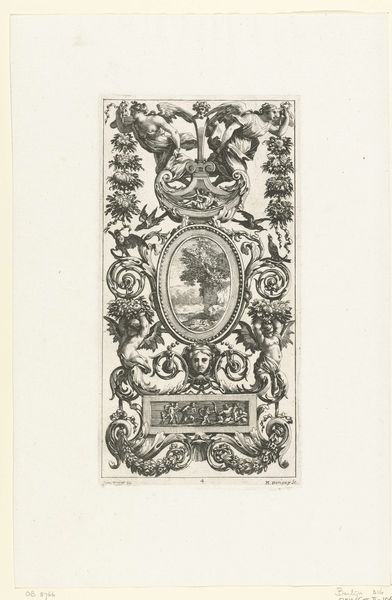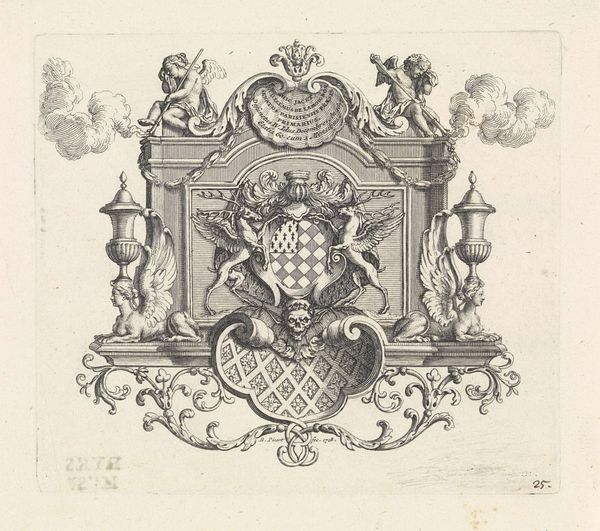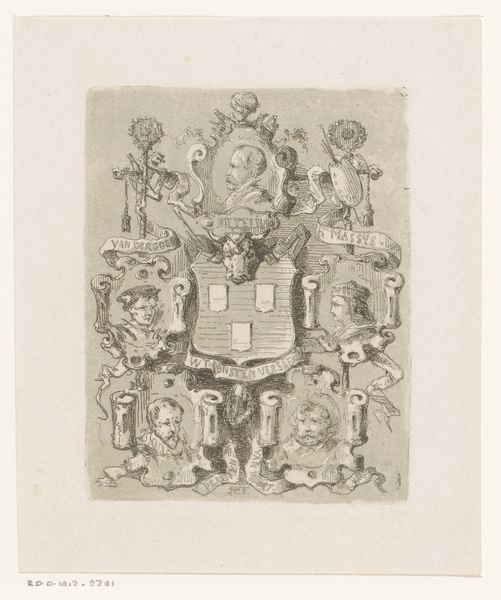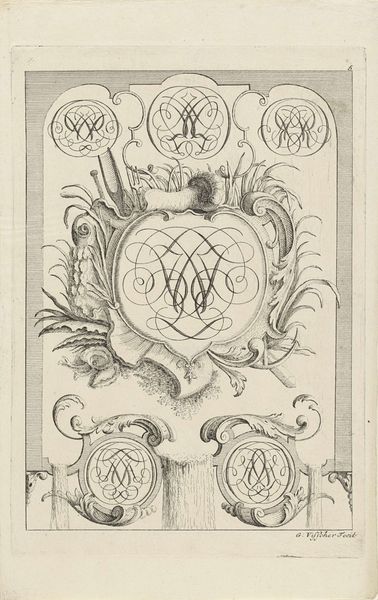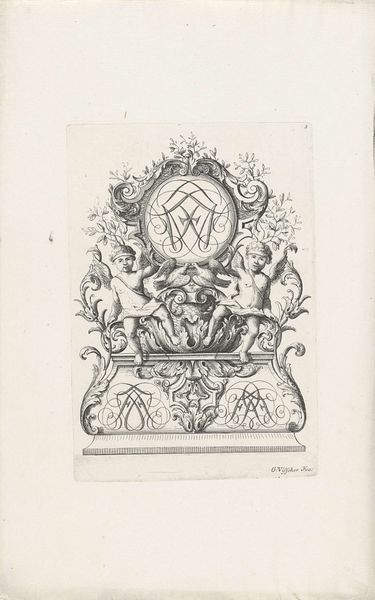
drawing, ink, engraving
#
drawing
#
baroque
#
pen drawing
#
figuration
#
ink
#
decorative-art
#
engraving
Dimensions: height 186 mm, width 139 mm
Copyright: Rijks Museum: Open Domain
Curator: Oh, the Baroque flourish! Looking at this pen and ink drawing, “Twee putti flankeren een monogram” – Two putti flanking a monogram – is just exuberance rendered on paper. Made sometime between 1690 and 1710 by Gerrit Visscher, what springs to mind for you? Editor: Almost overwhelmingly ornamental, isn't it? All those curls and flourishes practically fighting for space. It's hard to find a resting point for the eye, but those plump little cherubs are really what bring it to life for me. They're just so full of joy. Curator: You feel that joy despite it being…an engraving? I wonder what kind of labor went into producing something so ephemeral as decoration. Did Visscher see it that way, or did he think he was imbuing it with immortality? It could have adorned, say, the frontispiece of an important family bible. The paper itself seems deliberately simple, drawing all focus to the inkwork and the production of form. Editor: Well, even decorative arts serve specific social functions. This wouldn't have been for everyone; it's clearly aimed at a wealthy elite who could afford such refined embellishments. So it is absolutely related to production, but consumption and class play essential roles. And I think that contrast between the medium and the theme—those sweet, fleshy babies amidst these rigid geometric forms—makes you see both anew. I mean, is that bottom monogram sitting in something that's supposed to be a planter box? Curator: It does appear to be a hybrid! Like classical motifs fighting against more contemporary furniture. This interplay makes it hard for me to reconcile the putti and other cherubic figures of conventional art of the period versus a sense of decorative functionality and of mass-producible aesthetic appeal for the elites. What does that say about class appropriation through consumer goods at the time? Editor: I wonder too, about the process – etching and engraving were trades as much as they were "art". How did that system affect Visscher's choices? Do you think it affected the composition? And even today, who gets access to create these images? Curator: All of it shaped the final outcome, undoubtedly! And, perhaps, made something lasting out of fleeting tastes. Editor: So many complex layers here, reflecting the time but also demanding interrogation now.
Comments
No comments
Be the first to comment and join the conversation on the ultimate creative platform.
